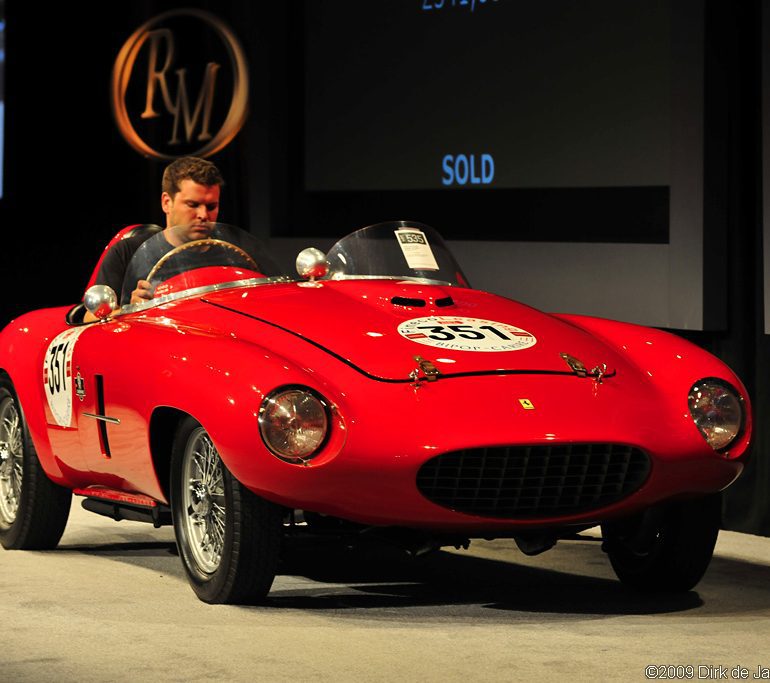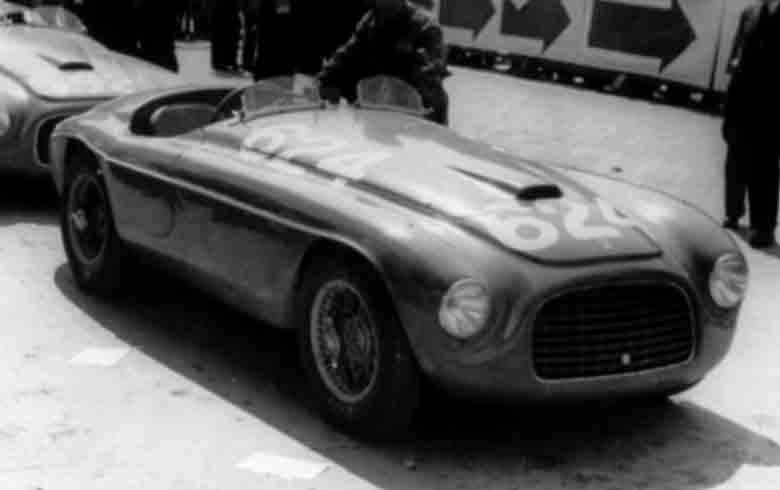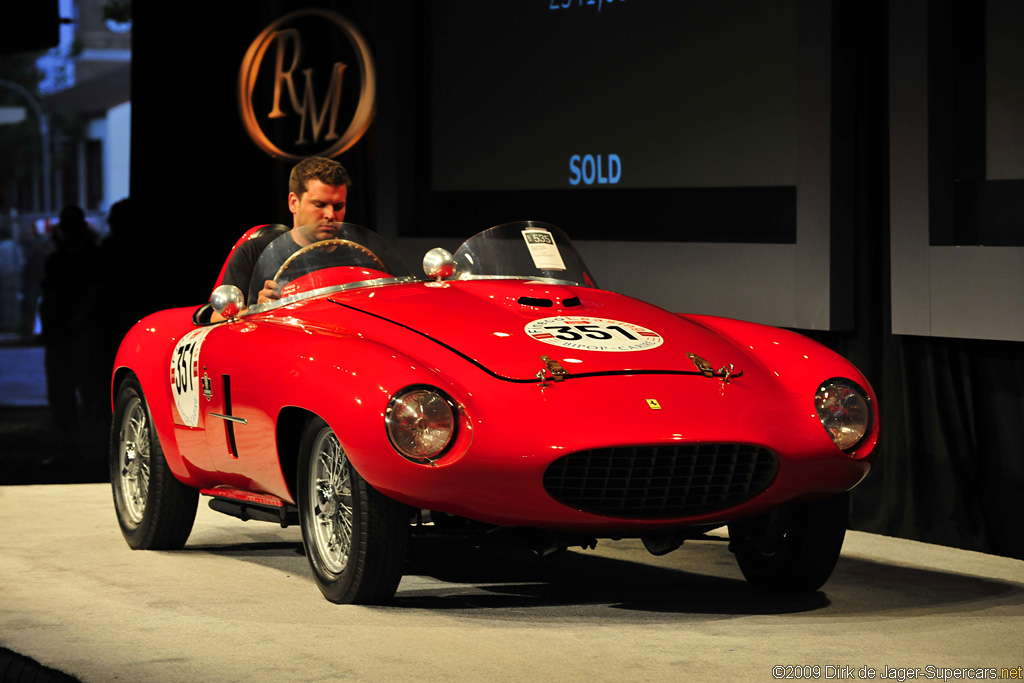1953 Ferrari 166 MM/53
In 1953, a second version of Ferrari’s venerable 166 Mille Miglia (MM) was produced and it was Ferrari’s sports car of choice for racing clientele that would race in the 2-liter class. The new car used an upgraded engine with roller cam followers that was first innovated by Lampredi on the long block V12. Along with other tweaks, 160 bhp was possible at 7,200 rpm.
The chassis and running gear of the 166 MM/53 was similar to the first 166 MM. The chassis was made from two large oval longerons that was cross-braced and built by Gilco. Suspension was also the same with unequal front wishbones upfront that shared a common transverse leaf spring. The rear was a live axle that held by semi-elliptic leaf springs and a pair of radius arms.
The 166 MM/53 was offered alongside other Ferraris that had larger engine sizes including the 3.4-liter 340 MM. Typically most were bodied as Touring Barchettas.
1953 Ferrari 166 MM/53 Gallery
See full 1953 Ferrari 166 MM/53 Gallery here
Ferrari 166 MM/53 Specs & Performance
| submitted by | Richard Owen |
| type | Racing Car |
| built at | Maranello, Italy |
| production | 13 |
| predeccesor | 1948 Ferrari 166 MM Barchetta |
| engine | V12 |
| position | Front Longitudinal |
| aspiration | Natural |
| ignition | Magneto |
| block material | Aluminum Alloy |
| valvetrain | SOHC, 2 Valves / Cyl |
| fuel feed | 3 Weber 36mm DCF Downdraft Carburetor |
| displacement | 1995 cc / 121.7 in³ |
| bore | 60 mm / 2.36 in |
| stroke | 58.8 mm / 2.31 in |
| power | 114.8 kw / 154 bhp @ 7200 rpm |
| specific output | 77.19 bhp per litre |
| bhp/weight | 236.92 bhp per tonne |
| body / frame | Aluminum over Gilco Steel Tuble Chassis |
| driven wheels | RWD |
| wheel type | Borrani Wire Wheels |
| front brakes | Aluminum Hydrualic Drums |
| rear brakes | Aluminum Hydrualic Drums |
| steering | Worm & Sector |
| f suspension | Unequal Wishbones w/Transverse Leaf Spring, Anti-Roll Bar |
| r suspension | Live Axle w/Semi-Elliptic Leaf Springs, Twin Radius Arms |
| curb weight | 650 kg / 1433 lbs |
| wheelbase | 2250 mm / 88.6 in |
| front track | 1250 mm / 49.2 in |
| rear track | 1200 mm / 47.2 in |
| transmission | 5-Speed Manual |
Ferrari 166 MM/53 Auction Sales History
1953 Ferrari 166MM/53 Spider Scaglietti 0308M/0050M – did not sell for $1,100,000. Several 166MM/53 models did well in competition, including the car presented here, which was delivered to Antoine Causse of Casablanca, Morocco in 1953. Originally issued in the numerical sequence of the time as chassis 0308M, it was a Competition Berlinetta bodied by Vignale, with the characteristic chromed ‘portholes’ on its flanks, a common Vignale ornamentation from the period. Monsieur Causse appears to have raced the Berlinetta twice; on June 7, he shared the car with Jean Dumay in the 12 Heures d’Hyeres (result unknown). From September 9-13, Causse and Dumay used the car to win its class in the fabled Tour de France Auto, finishing an impressive sixth place OA. Sometime shortly after the Tour de France Auto, Causse lent the car to a friend who, on a public road, rolled the car, destroying the Vignale Berlinetta bodywork. M. Causse sent the 166MM/53 back to the factory for repairs but upon receiving the estimate, sold the car back to the factory, perhaps in part-exchange for another car.
At the factory, the damaged berlinetta bodywork was stripped and given to the care of Enzo Ferrari’s son ‘Dino,’ to manage the rebody project. Dino chose to retain the services of Modenese coachbuilder Sergio Scaglietti for the assignment, in which he took a significant personal interest. This collaboration with Scaglietti proved fortuitous, producing one of the most achingly beautiful sports racing cars of its era; a more modern, rakish and utterly delectable shape. Very quickly this design became the prototype for the new, large bore four cylinder 750 Monza and 500 Mondial models and 0308M (now known as 0308M/0050M – more on this follows below) has become known as their forebear.
The extent of Dino’s actual influence upon the final result is the subject of much speculation, but suffice it to say that his intuition about the then-unheralded design talents of Scaglietti proved to be prophetic, perhaps even visionary. Auction Source: 2009 RM Auctions Sports & Classics of Monterey






